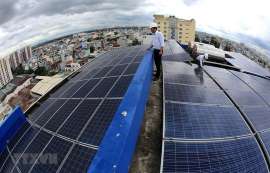Make in Viet Nam Energy 2.0 announced
VGP – Viet Nam enjoys abundant potentials for the development of renewable energy such as solar power, wind power, and hydropower.
|
|
|
Illustration photo |
A representative from the VBF, Ms. Virginia Foote said that fossil fuel has become exhausted. The demands for renewable, clean, and safe energy have become an urgent issue. Competent agencies have encouraged solar battery systems.
The MVEP 2.0, based on the groundbreaking 2016 edition – MVEP 1.0, was developed during a time of the fast transition towards renewable energy and increasing use of natural gas in electricity production in Viet Nam.
The MVEP 2.0 recommends Viet Nam to prioritize renewable energy in national power planning; increase use of natural gas as the current best-fit base load for renewable energy; construct a regulatory and permitting environment that attracts the private sector and smaller scale off-grid investment in clean energy generation and energy efficiency; invest in grid infrastructure to improve stability and capacity; and halt any new approvals for coal.
The report also suggests the implementation of regulatory frameworks and incentives that encourage investment in renewable energies, such as rooftop solar, battery storage, floating solar, and offshore wind projects, with simplified approval processes, while still maintaining safe power systems.
According to Head of VBF Power and Energy Working Group John Rockhold, Viet Nam owns abundant potential for the development of clean power, such as solar power, wind power and hydropower./.
By Khanh Phuong


